Zircuit
Risk Management
?Risk Management
The RMA™ is a blockchain credibility certification assessing governance, transparency, security, and results, providing trusted verification for businesses in Web3.
VaaSBlock has not audited this project and cannot vouch for this organization.
RMA™ Status: ❌ Unverified
Verification of 6 major compliance criteria.
Technology
?Technology
A collection of public facing information, data collected through partners and our own tools view we present a projects technology in one place for easy verification.
Analysis and testing of tech infrastructures.
Marketing
Alpha?Marketing
Top level look at a projects marketing capablities currently in alpha this section will grow to show quickly how a project promotes itself and the effectiveness.
Screening of user base and community feedback.
Background
?Background
Using multiple public facing sources across the web view a summary of a projects purpose, key achievements and general overview.
Collection of basic administrative documentation.
Risk Management
Last Updated
2025/4/16
Transparency
Transparency Score
Algorithmic assessment of a project’s transparency level, using multiple public data points to measure its commitment to compliance, documentation, and clarity in communication.
Transparency Score
Category Rank
A ranking that positions the organization among its industry peers, evaluating its relative performance based on key compliance, credibility, and transparency indicators.
Category Rank
Zircuit vs Artificial Intelligence (AI)
VaaSBlock Rank
A global ranking that compares the organization against all entities listed on VaaSBlock, reflecting its overall credibility, transparency, and operational performance versus the full Web3 ecosystem.
VaaSBlock Rank
Zircuit vs All Listed Organizations
Transparency
Transparency Score
Transparency Score
Algorithmic assessment of a project’s transparency level, using multiple public data points to measure its commitment to compliance, documentation, and clarity in communication.
Category Rank
Zircuit vs Artificial Intelligence (AI)
Category Rank
A ranking that positions the organization among its industry peers, evaluating its relative performance based on key compliance, credibility, and transparency indicators.
VaaSBlock Rank
Zircuit vs All Listed Organizations
VaaSBlock Rank
A global ranking that compares the organization against all entities listed on VaaSBlock, reflecting its overall credibility, transparency, and operational performance versus the full Web3 ecosystem.
RMA™
✘ UnverifiedCorporate Governance
The verification of fundamental governance, organizational structure, including verifying the entity’s legal registration and adherence to local laws and regulations.
Corporate
Governance

Team Proficency
Evaluation of an organization’s personnel, ensuring that crucial team members possess the expertise and dedication necessary to execute current business models and scale effectively.
Team
Proficiency

Technology & Security
Assessment of the organization’s technological framework, including blockchain integrations (where relevant), system architecture, and overall IT infrastructure.
Technology
& Security

Revenue Model
Comprehensively evaluation of a company’s income-generating strategies (how do they make or intend to make money), ensuring financial robustness and sustainability.
Revenue
Model

Results Delivered
The Results Delivered component of the RMA™ audit comprehensively evaluates an organization’s ability to achieve its goals and honor its commitments.
Results
Delivered

Planning & Transparency
The Planning and Transparency component of the RMA™ audit offers a thorough assessment of how an organization manages its workflow and prepares for unexpected challenges.
Planning &
Transparency

Technology
Marketing
Marketing Effectiveness
This score assesses the impact of detected marketing activity and the corresponding price movement of a token. The score understands whole market movements to ensure tokens are assessed fairly against peers.
Marketing Effectiveness
Confidence Index
This index determines our confidence in the score we have given. Generally, as more data is collected, the confidence index will increase. If a project has lots of activity, this confidence is earned faster.
Confidence Index
VaaSBlock Rank
This identifies where a project sits compared to all projects accessed for Marketing Effectiveness.
VaaSBlock Rank
Zircuit vs All Listed Organizations
Marketing Effectiveness
Marketing Effectiveness
This score assesses the impact of detected marketing activity and the corresponding price movement of a token. The score understands whole market movements to ensure tokens are assessed fairly against peers.
Confidence Index
Confidence Index
This index determines our confidence in the score we have given. Generally, as more data is collected, the confidence index will increase. If a project has lots of activity, this confidence is earned faster.
VaaSBlock Rank
Zircuit vs All Listed Organizations
VaaSBlock Rank
This identifies where a project sits compared to all projects accessed for Marketing Effectiveness.
No Chain No Gain™ Podcast ⛉
This Organization is yet to join the No Chain No Gain™ Podcast and share insights on what makes their business trustable and innovative.
💡 NCNG generated over 1 Million impressions in its first six months of existence.
PR Impact
PR Impact
VaaSBlock provides estimations to the impact that traditional digital media can have on a project. This is an early release; more areas of PR are planned in future versions.
Search Terms ? Search TermsThese are the terms we discovered the article for on page one of Google. | Est. Traffic ? Estimated TrafficWe estimate how much traffic an article will get. Generally, our estimations are slightly higher than those of more established tools. We are working on the algorithm all the time, and results could change. | Est. Value ? Estimated ValueBased on the estimated traffic we generate an estimation for what this traffic would have cost to generate if you tried to target these users with ads. The positions for the article on google and the location of the traffic are the major factors in this estimation. | |||
|---|---|---|---|---|---|
Zircuit 是什麼?質押計畫、主網、代幣空投上線一次看 – Grenade 手榴彈 source: grenade.tw | Zircuit 是什麼?質押計畫、主網、… Seen 2024-11-25T12:43:00+08:00 Zircuit 是什麼?質押計畫、主網、代幣空投上線一次看 – Grenade 手榴彈 source: grenade.tw | Organic | grenade.tw | ||
Zircuit Defi Farming Tvl Rank One source: Abmedia | Zircuit Defi Farming… Seen 2024年11月28日 Zircuit Defi Farming Tvl Rank One source: Abmedia | Organic | abmedia.io | ||
Zircuit source: Coingecko | Zircuit… — Zircuit source: Coingecko | Organic | coingecko.com | ||
What Is source: Bitget | What Is… Seen 2024年11月25日 What Is source: Bitget | Organic | bitget.com |
| Est. Traffic | Est. Value | ||
|---|---|---|---|
Zircuit 是什麼?質押計畫、主網、… Seen 2024-11-25T12:43:00+08:00 | |||
Zircuit Defi Farming… Seen 2024年11月28日 | |||
Zircuit… — | |||
What Is… Seen 2024年11月25日 |
Background
Organization Name – Zircuit
Category –  Artificial Intelligence (AI)
Artificial Intelligence (AI)
About
powered by irmaAI
irmaAIZircuit is an EVM‑compatible zero‑knowledge rollup (zkEVM) that combines cutting‑edge Layer 2 scalability technology with AI‑powered security to make Ethereum dApps faster, cheaper, and safe…r. Built on a hybrid architecture that fuses the battle‑tested OP Stack (Optimism Bedrock) with zero‑knowledge proofs, Zircuit decomposes circuits and parallelizes proof generation, processing large batches at high speed and minimal cost. A defining innovation is Sequencer Level Security (SLS), where AI monitors the transaction mempool in real time to detect and quarantine malicious activity before it’s committed—preventing up to 99.5 % of risks such as hacks, phishing, frontrunning, and oracle manipulation. Zircuit also provides a secure native bridge that connects Ethereum and over 120 chains, protected by SLS, enabling seamless asset transfer. Developers can port Ethereum dApps directly using MetaMask, Hardhat, Foundry or other familiar tools without code rewrites, accelerating onboarding. Zircuit earned multiple Ethereum Foundation L2 research grants, and publishes peer-reviewed papers in cryptography, AI, and rollup compression; the team includes 13 PhDs and extensive publication credentials. Its public testnet launched in November 2023 during Devconnect, attracting early ecosystem partners like Blocto, Galxe, API3, Hashflow and Rarible. In February 2025, Zircuit released the “Garfield” upgrade testnet, implementing EIP‑7702 and Cancun opcodes like TLOAD, TSTORE and MCOPY; the legacy testnet was deprecated in its favor. Native staking of ETH, liquid staking tokens (LSTs) and liquid restaking tokens (LRTs) is live on the Liquidity Hub, allowing participants to earn yields and reward points. The protocol token ZRC (total supply 10 billion) is allocated across community airdrops, governance, ecosystem grants, team and investors; early snapshots in July and November 2024 distributed 7 % and 3 % respectively to qualified participants. Zircuit’s native DEX, Circuit, was built during the testnet phase and drew over 600k users, receiving both technical and marketing support from Zircuit core team. Circuit is now the prominent liquidity hub on-chain, benefiting from AI‑driven capital efficiencies. Although still evolving toward full decentralization, Zircuit plans to roll out on‑chain governance enabling ZRC holders to vote on security policies, upgrades, bridge rules and protocol parameters; decentralized sequencing is under research. As of mid‑2025, Zircuit is positioning itself as the most secure and performant Ethereum Layer 2: offering sub‑2‑second block times, very low fees, gas abstraction (ERC‑4337), cross‑chain interoperability, institutional‑grade composability, AI‑backed security, and modular architecture. Its mix of developer familiarity, scalability, and proactive protection makes it attractive for DeFi protocols, institutional users, staking services, and high‑value smart contracts. Ecosystem growth continues via Build‑to‑Earn programs, liquidity fairs, staking incentives, and integrations with LayerZero, Axelar, and Nansen for portfolio tracking. While competition from zkSync, Scroll and Starknet is intense, Zircuit distinguishes itself through real‑time mempool filtering and its hybrid model, which bypasses the fraud‑proof delay typical in optimistic systems. Challenges remain, including scaling prover infrastructure, broadening adoption, and executing its decentralization roadmap without weakening AI‑enabled safeguards. Nonetheless, with strong investor backing (Binance Labs, Pantera Capital, Dragonfly, Maelstrom, Mirana, Nomad Capital), grants, and a growing developer base, Zircuit aims to reshape Ethereum Layer 2 security and accessibility. Read More
Creation Date
December 2025
Headquarters
Cayman Islands
Organization Maturity Level
Growing Business
RMA™ Type
–
Useful Links
Website – zircuit.com
Notable Achievements
2023
Public testnet launch
2025
Launch of staking & Liquidity Hub
2025
Native DEX Circuit launch
- vaasblock.com /
- Artificial Intelligence (AI) /
- Zircuit
















